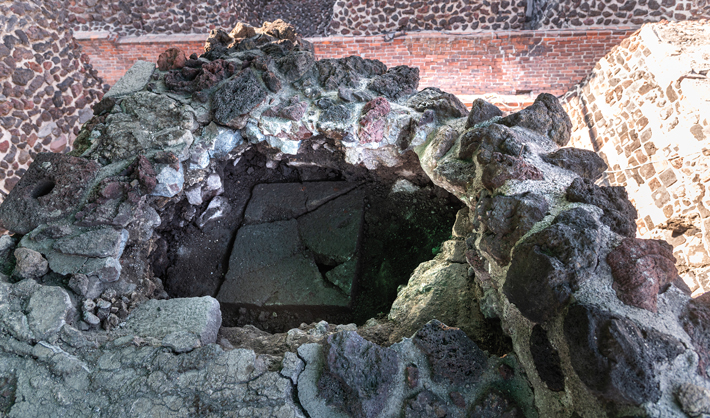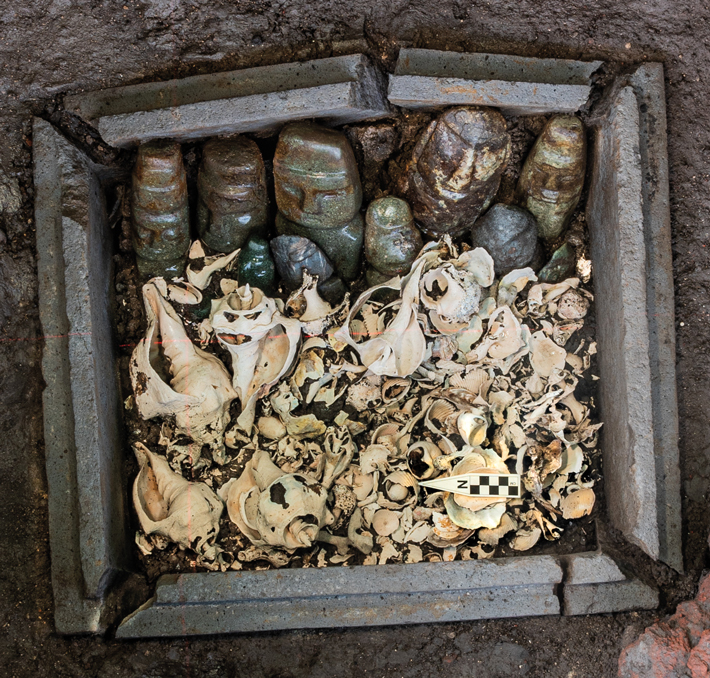
The Templo Mayor, including the massive pyramids at the heart of the Aztec, or Mexica, capital of Tenochtitlan, is like a Russian doll, says archaeologist Leonardo López Luján of Mexico’s National Institute of Anthropology and History. “When you dig within a Mesoamerican pyramid, you find another that is older and smaller,” he says. In the ninth of 13 total layers, López Luján and his team have uncovered a small chest made of volcanic stone that, like the Templo Mayor complex itself, contains many layers of meaning. Inside the chest, they found 15 perfectly preserved anthropomorphic figurines made of serpentine, along with Aztec symbols of water and fertility such as marine sand, a pair of rattlesnake-shaped scepters, hundreds of greenstone beads, and seashells, snails, and coral. The layer of the temple in which the chest was found dates to the year 1 Rabbit, or 1454, when, under Moctezuma I (reigned 1440–1469), the temple underwent one of its most impressive expansions. But the figurines were already 1,000 years old at the time and had been brought to Tenochtitlan from around 200 miles away.

These types of figurines were typically produced from around 500 B.C. to A.D. 680 by the Mezcala people, who were based in an area that is now in the southwestern Mexican state of Guerrero. In their most sacred space, the Aztecs made the objects their own by embellishing them with paint and placing them in the chest as offerings to their rain god Tlaloc. “Tenochtitlan was the center of the Mesoamerican world,” says López Luján. Objects were brought from all of the provinces of the empire, and even beyond its borders. “The Mezcala figurines were considered by the Aztecs magical relics from the past,” he says. “Many of these offerings are cosmograms, or representations in miniature of the universe as conceived by the Aztecs. The chest and its contents symbolized a mythic realm known as Tlalocan which was re-created by Templo Mayor, where the rain god kept water and sustenance.”





